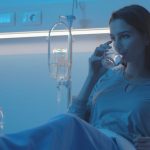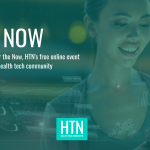Parkinson’s is the fastest growing neurological conduction globally, and while there’s steady progress there is frustratingly no cure.
According to Parkinson’s UK, about one in 37 people alive today in the UK will be diagnosed with the disease in their lifetime and about 145,000 people in the country are currently living with it.
This is only a small fraction of the global Parkinson’s community – it is a condition which inflicts individuals from all backgrounds, regardless of age, race, gender and so on.
The only fixed variable is the incurable nature of the disease.
The impact of Parkinson’s on both those living with it and their families can be immeasurable.
one of the most significant symptoms is issues with movement, whereby those living with the disease struggle to move their limbs and often experience ‘freezing,’ a temporary, involuntary inability to move.
This can lead to individuals having to use wheelchairs to get around, severely affecting their mobility and their independence.
Activities we take for granted such as grocery shopping, travelling, or simply using stairs, can turn into insurmountable tasks.
Tremors, muscle stiffness, and impaired coordination all make the world a more daunting place, especially during the early onset of Parkinson’s.
The incurability of Parkinson’s is perhaps the most debilitating factor of this condition.
While there are pharmaceutical interventions available, many individuals don’t need medication upon initial diagnosis as it is a progressive disease, meaning symptoms emerge at different times and with varying severity.
Consequently, those at the early stages of the disease or with milder symptoms need different forms of treatment outside of the clinical setting.
When speaking with people in the Parkinson’s community, it becomes clear that there is a real problem with mitigating symptoms in the short-term.
Thankfully, a vibrant and supportive global community of people with Parkinson’s and their families is thriving.
This community is dominated by a positive approach to living with the condition and free sharing of ways to simplify daily tasks and minimise the impact of common symptoms.
Being able to share your experience of living with such a life-changing condition plays an important role too.
Another brilliant aspect of the Parkinson’s community is that it is largely tech-positive, with patients keen to try new treatments and methods for making it easier to live with the condition.
In recent years this includes wearable medical devices, a technological innovation that is now at the centre of a growing market of solutions targeting specific Parkinson’s symptoms.
It is hard to understate the amazing progress made in MedTech in recent years.
Where once the only choice for an individual suffering with the condition was to take medication, non-pharmaceutical interventions are offering life-changing alternatives and bringing back smiles to people at record speed.
At Charco Neurotech, we have managed to combine two technologies, vibrotactile stimulation and cueing, to make an effective, wearable device called the CUE1 which eases the symptoms of Parkinson’s.
Vibrotactile stimulation uses the concept of peripheral stimulation, in this case vibration, to help “boost” the neuromotor circuitry and bypass movement problems caused by a lack of dopamine.
A quiet electric motor provides these vibrations, produced in a specialised pattern developed through extensive research and testing alongside the Parkinson’s community.
This focused stimulation is accompanied by a rhythmic frequency, called cueing, which helps with movement and freezing.
Another key benefit of modern wearable devices is that they can collect valuable data on how a patient is faring and the nature of their symptoms and communicate that to the individual’s neurologist.
This remote tracking ensures medical practitioners can prioritise people in need of urgent consultation or care and subsequently make more informed decisions about their patients’ treatments based on longitudinal data sets.
From the Parkinson’s community’s perspective, being able to achieve this via a non-invasive device and without entering a clinical setting is truly revolutionary.
The justified need to ensure any devices that make it to patients are proven to work without side effects, and that data collected is stored and managed securely, means a lot of people who are keen to try out new technologies cannot currently do so.
However, there is cause to believe that the deployment of MedTech devices will speed up rapidly in the coming years.
Rapid strides are being made across the world to ensure that wearable devices, including the CUE1, can be dispatched to people both privately and through public healthcare systems in a way that is safe and effective.
Medical practitioners, hospitals and research centres are also jumping at the opportunity to trial devices in clinical settings to improve technologies and find ways to bridge the treatment of severe cases of neurological conditions until cures are found.
At Charco Neurotech we are immensely proud to be part of this development together with a large number of researchers and other tech companies choosing to put the short-term lived experience of people living with neurological conditions at the heart of what we do.
An important aspect of this mission is to spread more awareness of the role that wearable devices can, and will, play in the healthcare of the future.
In a world where a growing number of people will have to live with neurological conditions, there is thankfully some cause for optimism!





